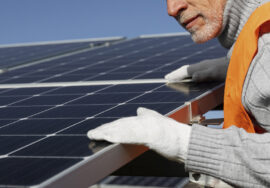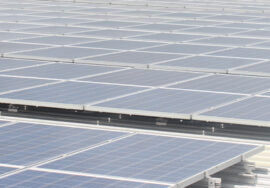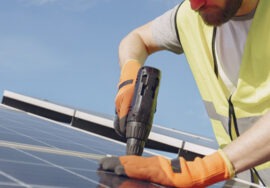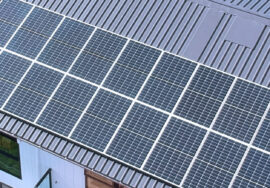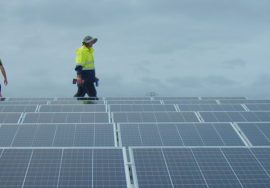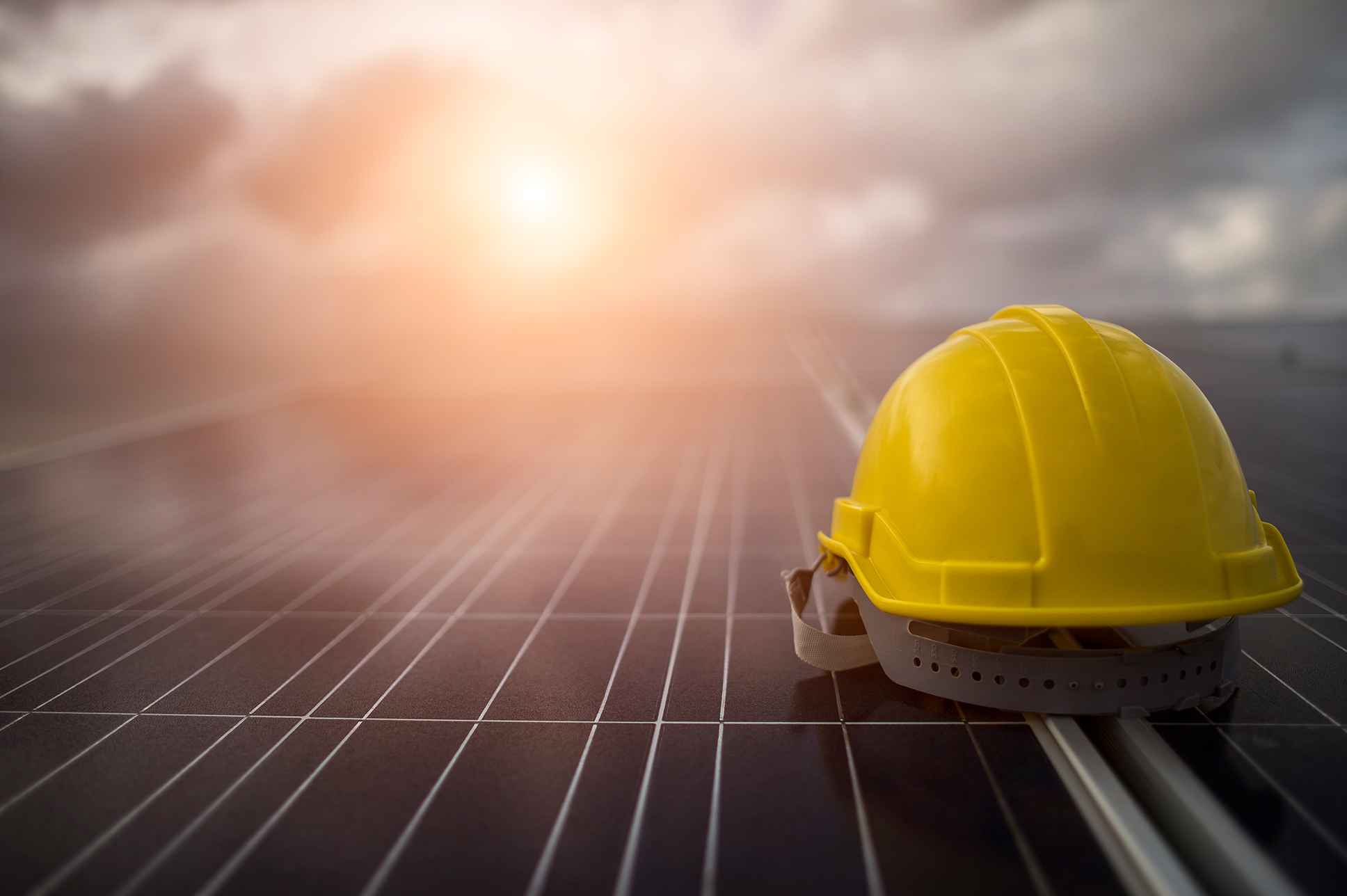
Commercial solar panels: Systems that have a lifespan of 15-20 years and require little maintenance
What are Commercial Solar Panels?
Commercial solar panels are an array of multiple photovoltaic (PV) solar panels that convert sunlight into electricity.
Photovoltaic (PV) solar panels comprise of solar cells made from silicon that is constructed with a positive layer and a negative layer, which together create an electric field. Multiple cells make up a solar panel, and multiple panels or modules can be wired together to form a solar array.
Commercial solar panels employ a large number of solar arrays to generate more electricity.
These can be installed on the top of buildings and generate enough energy to meet the building’s power needs. Commercial solar panels are sources of clean and renewable energy that require very little maintenance and has no carbon emissions which has become a global concern.
To learn more about commercial solar panels and inverters, check out our previous post here
How do Commercial Solar Panels work?
Commercial solar panels collect clean renewable energy from sunlight and convert it into electricity which is used to provide power for electrical loads.
Solar panels comprise several individual solar cells that are made up of layers of silicon, phosphorous and boron, arranged in a grid-like pattern. The power generated by these solar cells is sent to an inverter which converts the DC power from the solar panels into AC power which is similar to the energy sent via a utility grid.
Commercial inverters are generally available in the range of 2.5 kW to 250 kW power level and are designed to meet the requirements of any commercial application.
To know more details about how commercial solar panels work, check out our previous post here
Features of Commercial Solar Panels
- Commercial solar panels can be installed on the rooftop or open space available in commercial buildings as they have enough area for a large number of solar panels to be installed and produce enough solar electricity to meet all of their power needs.
- Commercial solar panels generate enough power during the day that it can be stored and harnessed to be used in the night as well.
- Commercial solar panels are very sturdy and require very little maintenance.
- They have a lifespan of over 15-20 years and post-installation the electricity generated on the system is absolutely free.
Check out our commercial solar panels options.
Applications of Solar Panels
- Commercial solar panels can be used to power industrial buildings in off-grid or remote locations.
- Commercial solar panels installed on the rooftop of buildings can be used to light up signs or message boards. Solar energy charges the battery so that the signs can remain illuminated even during the night.
- Commercial solar panels can be used for preheating ventilation air as well as water heating in offices and businesses.
To know how to power your life with solar energy, click here
THE 4 MAIN TYPES OF SOLAR PANELS
There are 4 major types of solar panels available on the market today: monocrystalline, polycrystalline, PERC, and thin-film panels.
Monocrystalline solar panels
Also known as single-crystal panels, these are made from a single pure silicon crystal that is cut into several wafers. Since they are made from pure silicon, they can be readily identified by their dark black color. The use of pure silicon also makes monocrystalline panels the most space-efficient and longest-lasting among all three solar panel types.
However, this comes at a cost — a lot of silicon is wasted to produce one monocrystalline cell, sometimes reaching over 50%. This results in a hefty price tag.
Polycrystalline solar panels
As the name implies, these come from different silicon crystals instead of one. The silicon fragments are melted and poured into a square mold. This makes polycrystalline cells much more affordable since there is hardly any wastage and gives them that characteristic square shape.
However, this also makes them less efficient in terms of energy conversion and space since their silicon purity and construction are lower than monocrystalline panels. They also have lower heat tolerance, which means they are less efficient in high-temperature environments.
Passivated Emitter and Rear Cell (PERC) panels
PERC solar panels are an improvement of the traditional monocrystalline cell. This relatively new technology adds a passivation layer in the rear surface of the cell that enhances efficiency in several ways:
- It reflects light back into the cell, increasing the amount of solar radiation that gets absorbed.
- It reduces the natural tendency of electrons to recombine and inhibit the flow of electrons in the system.
- It allows greater wavelengths of light to be reflected. Light waves over 1,180nm can’t be absorbed by silicon wafers and simply pass through, so they end up heating the cell’s metal back sheet and reduce its efficiency. The passivation layer reflects these higher wavelengths and stops them from heating up the back sheet.
PERC panels allow greater solar energy collection in a smaller physical footprint, which makes them ideal for limited spaces.
They are only slightly more expensive than traditional panels due to the added materials needed, but they can be manufactured on the same equipment as traditional panels, which makes them relatively similar to produce.
Thin-film solar panels
Thin-film panels are characterized by very fine layers that are thin enough to be flexible. Each panel does not require a frame backing, making them lighter and easier to install.
Unlike crystalline silicon panels that come in standardized sizes of 60, 72, and 96-cell counts, thin-film panels can come in different sizes to suit specific needs. However, they are less efficient than typical silicon solar panels.
Apart from using solar, there are different ways to help your business save money. Keen to learn more? Click here
ABOUT TRILECT SOLAR
Trilect Solar is a division of Trilect Services, New Zealand’s master electrician since 1997.
We are members of the Sustainable Energy Association of New Zealand (SEANZ) which offers additional peace of mind to our customers.
Trilect Electrical Services is a large electrical service company which is a member of the Master Electricians & Mastercraft network with 40 employees and a 20+ years history of customer satisfaction.
We do not use sub-contractors. All of the installations will be carried out by our experienced team.
Trilect Solar offers a customised energy plan that works for your home/ business.
Get started now by booking a free on-site consultation.
Request Your On-site Consultation
Or call us on (09) 271 2493

